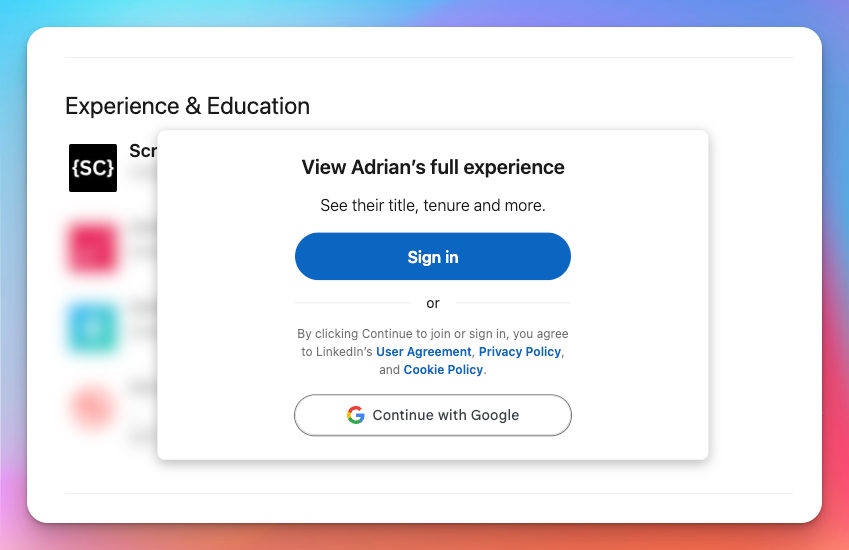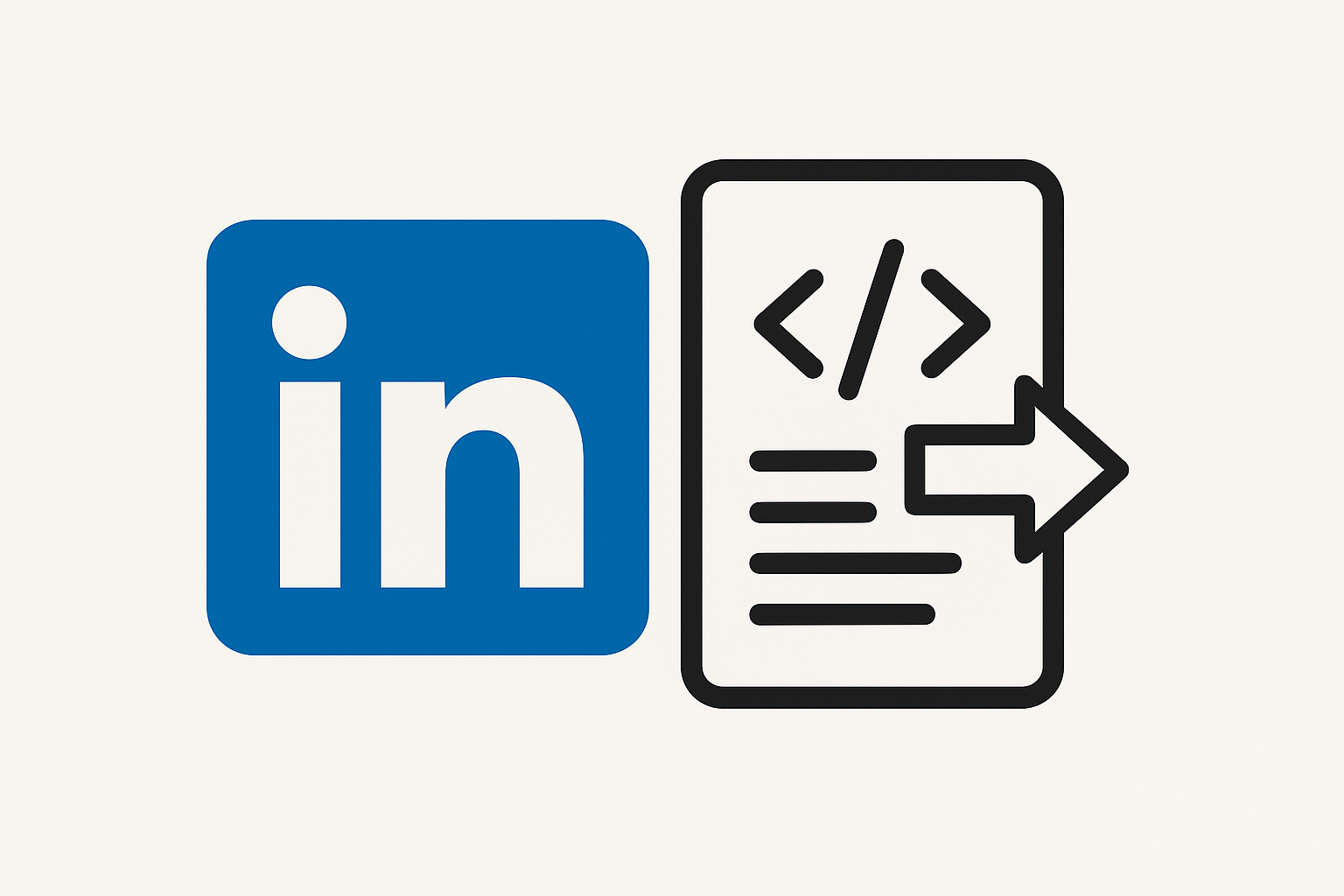The Ultimate Guide to Scraping LinkedIn Profiles (2025 Edition)
LinkedIn is one of the richest sources of professional data on the internet and everyone from recruiters to B2B founders to data analysts wants access to it.
But scraping LinkedIn isn’t as simple as hitting an endpoint and calling it a day. There are a lot of changes, legal developments, and tradeoffs you should know about before you dive in.
Here’s everything you need to know.
TL;DR – Which Option is Right for You?
| Feature | Behind Login Scrapers | Scrape Creators (Public) |
|---|---|---|
| Job History | Yes | No |
| Requires Login | Yes | No |
| Risk of Takedown | Yes | No |
| Pricing | Typically higher | More affordable |
| Long-Term Stability | Uncertain | Reliable and compliant |
The Big Shift: LinkedIn No Longer Shows Work History Publicly (for most profiles)
Until recently, you could get a lot of value from scraping public LinkedIn profiles, even without being logged in. But LinkedIn has quietly removed work history from public profiles. That means if you’re scraping the open web version of LinkedIn, you're no longer getting the most important part of someone’s professional profile.
So what’s the workaround?

Option 1: Scraping Behind the Login (Full Data, Higher Risk)
If you need full job history and detailed professional background, there’s only one way to get it: scrape LinkedIn while logged in.
That means using buying accounts, authenticated sessions, or API services that go behind the login.
Here are some options:
Scrapers That Access Full Profile Data
- Fresh LinkedIn Profile Data (RapidAPI)
Gives you job history and more. - Scrapin.io
Another scraper with detailed data. Like all such tools, it’s subject to takedown risk.
These services work, and if you absolutely need that juicy data, they’re often the best option. Just keep in mind they could go down unexpectedly due to legal pushback.
Legal Context: Why These Tools Can Disappear
Several high profile legal cases explain why behind-the-login scrapers operate in a gray zone:
- HiQ vs. LinkedIn: The court ruled that scraping public LinkedIn data is legal, but didn’t grant protection for scraping behind login.
- Meta vs. Bright Data: Court rules in favor of Bright Data, stating public data can't be policed
Case in point: Proxycurl, one of the most popular LinkedIn scraping APIs, recently shut down under legal pressure, because they were scraping behind the login. Read their shutdown post.
Option 2: Scraping Public Profiles (Limited Data, Lower Risk)
If you're looking for a stable, compliant, and cost effective solution, and you're okay with not having full job history, then public scraping is still a viable path.
That’s where Scrape Creators comes in.
We focus on publicly available LinkedIn data, and don’t require login or cookies. This means:
- No risk of your scraper being shut down overnight
- No need to manage sessions or proxies
- Affordable pricing for ongoing use
You won’t get full job history, but for many use cases (light lead gen, contact enrichment, etc.), it’s more than enough.
Final Thoughts
There’s no “one size fits all” answer when it comes to scraping LinkedIn. If you need the full data, you'll have to go behind the login, just understand the risks. If you're looking for something lightweight and stable, a public scraper like Scrape Creators might be the better fit.
Try Scrape Creators Free
Want to try a compliant LinkedIn scraper that just works? Get 100 free requests here

